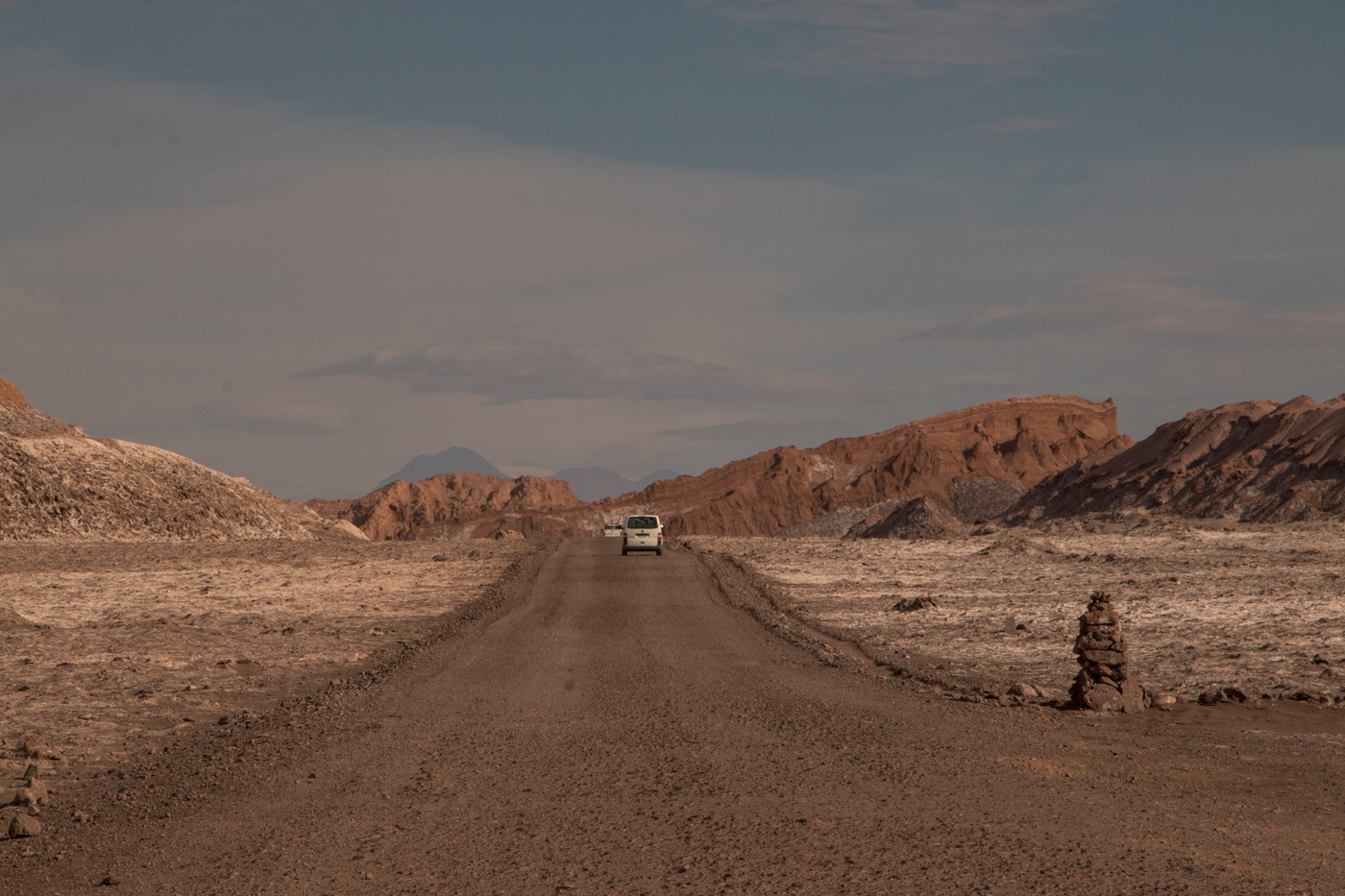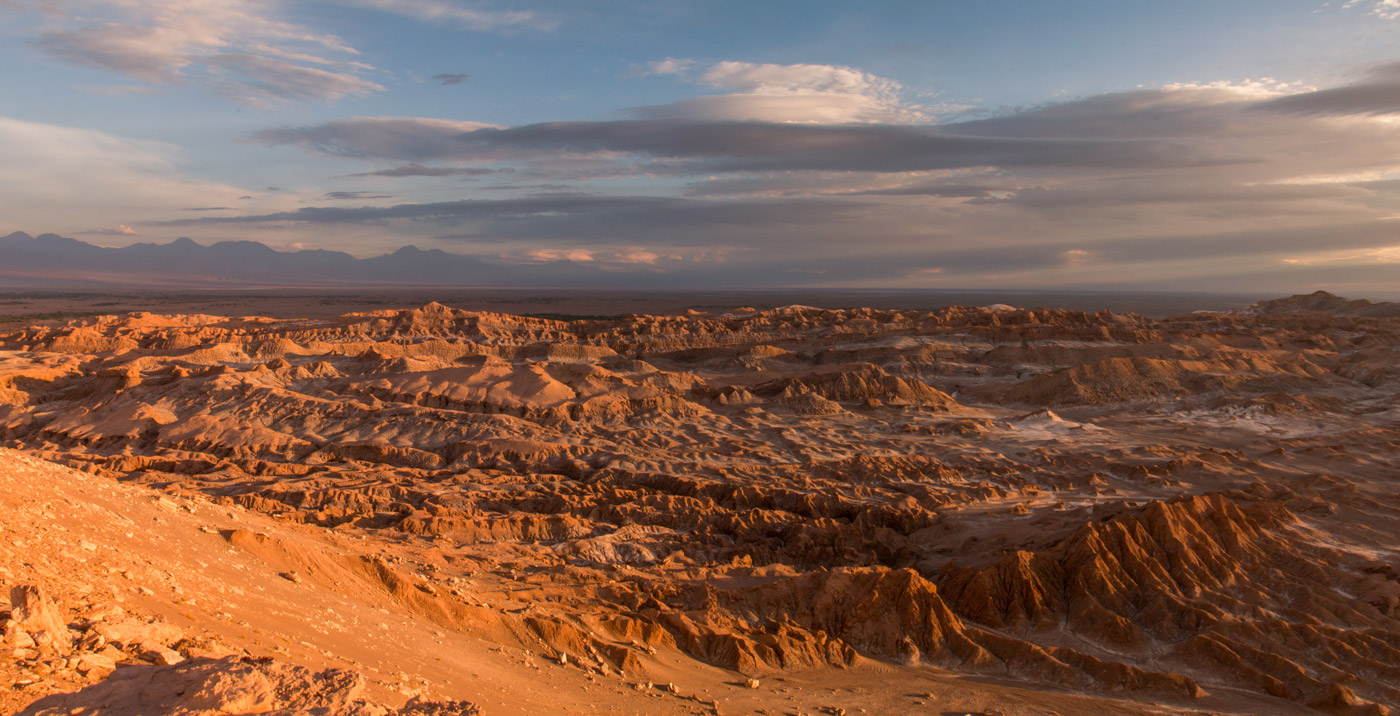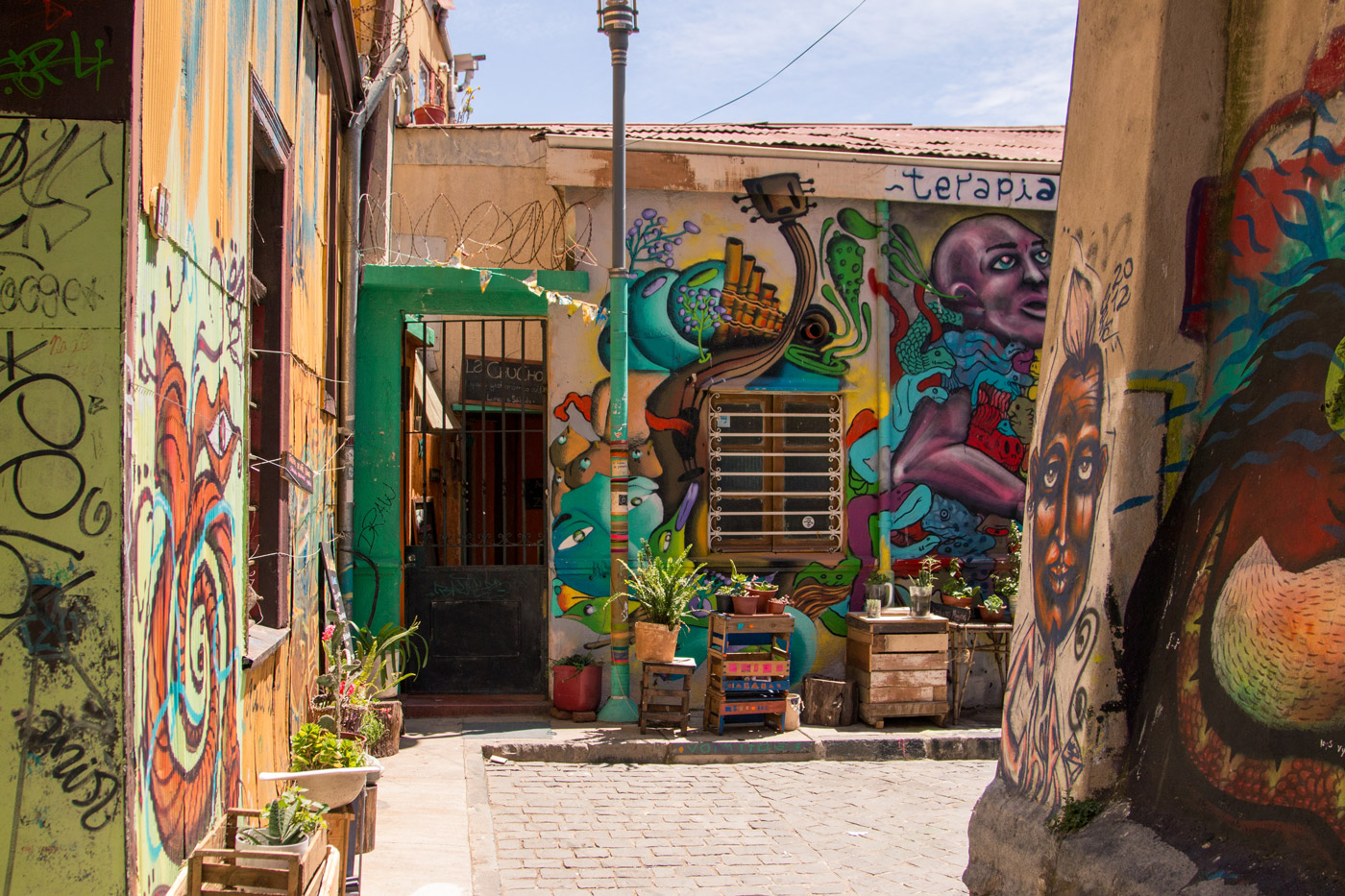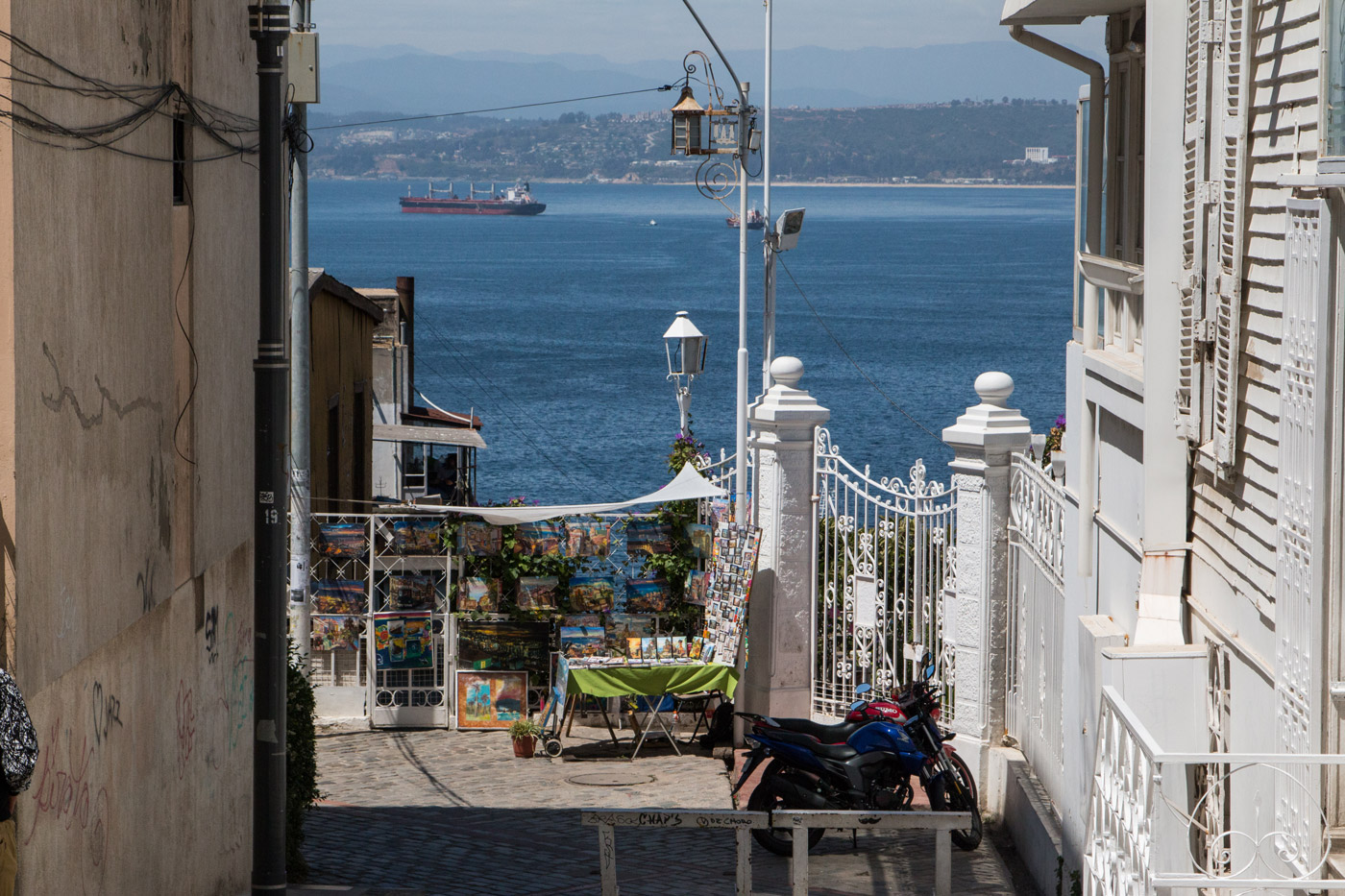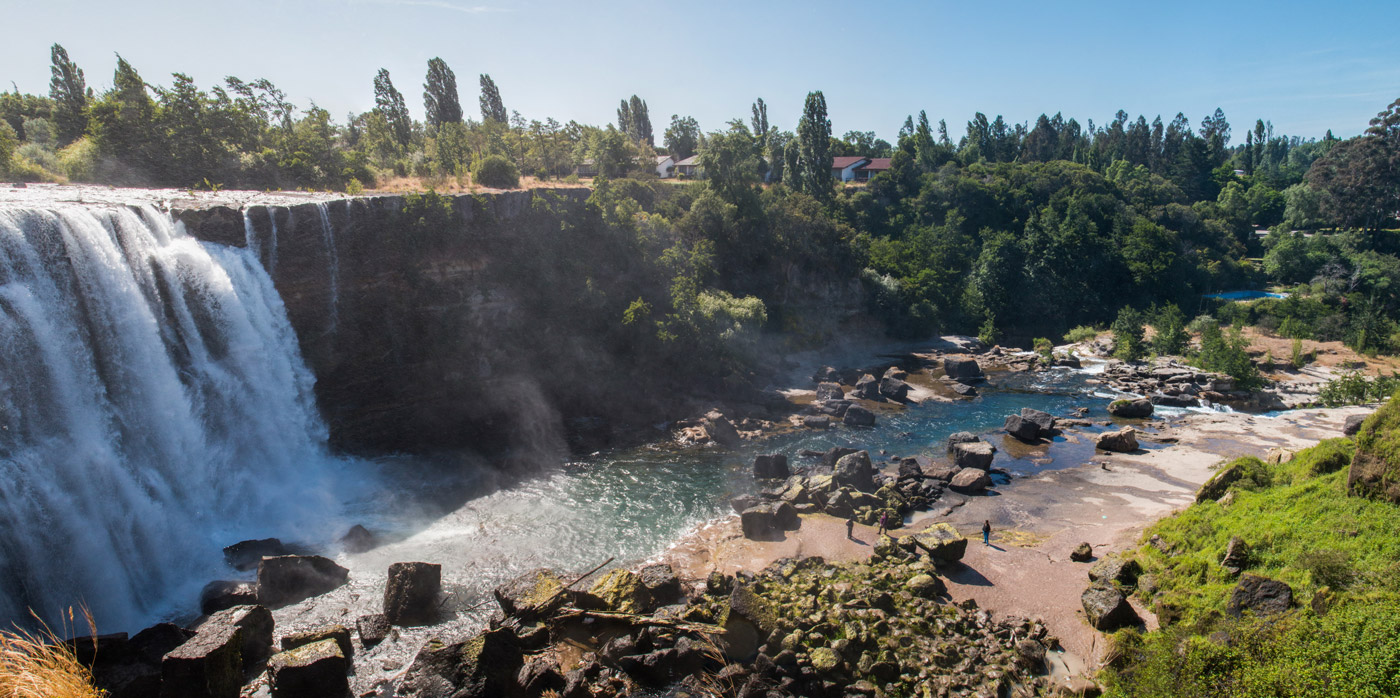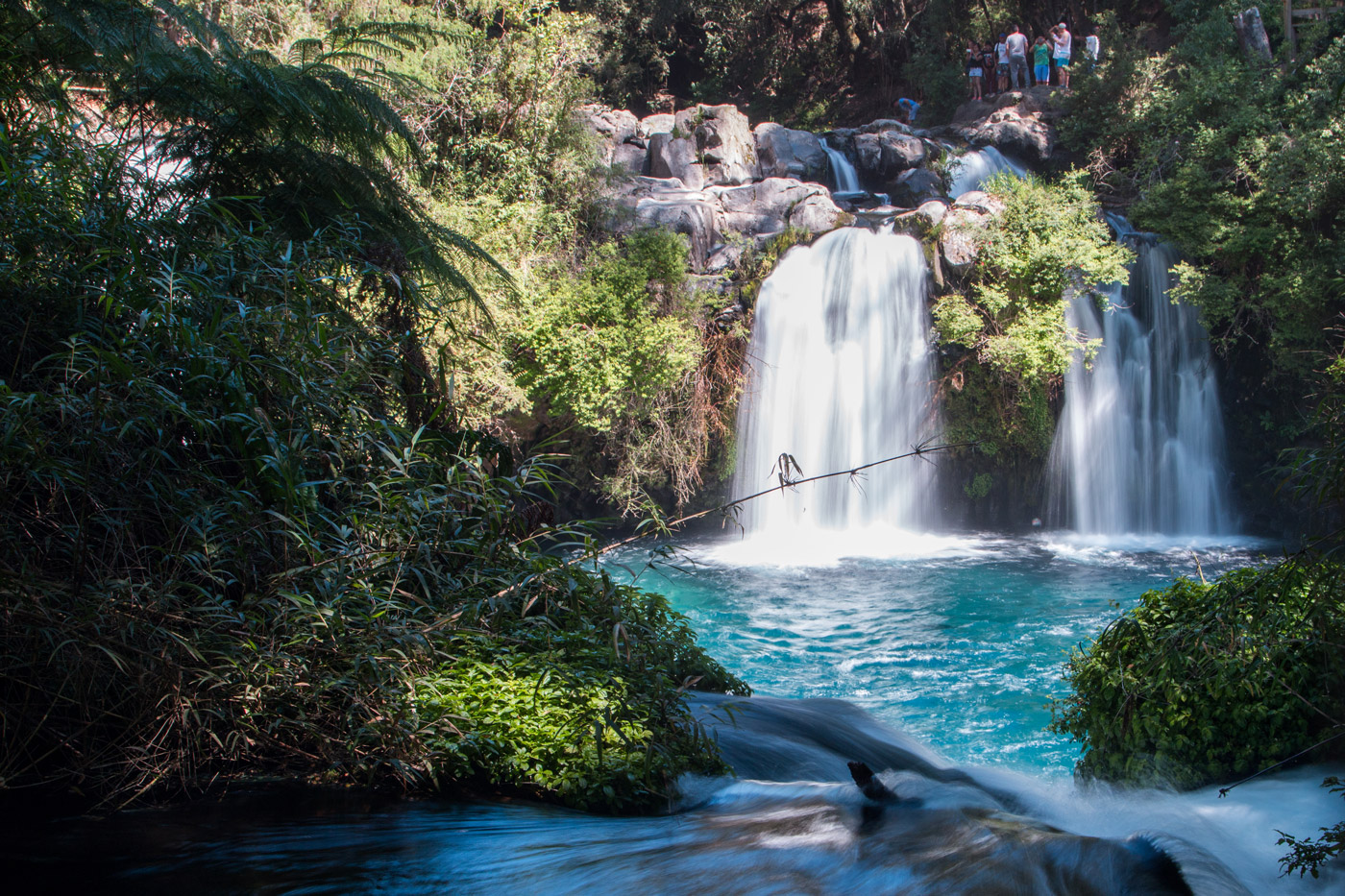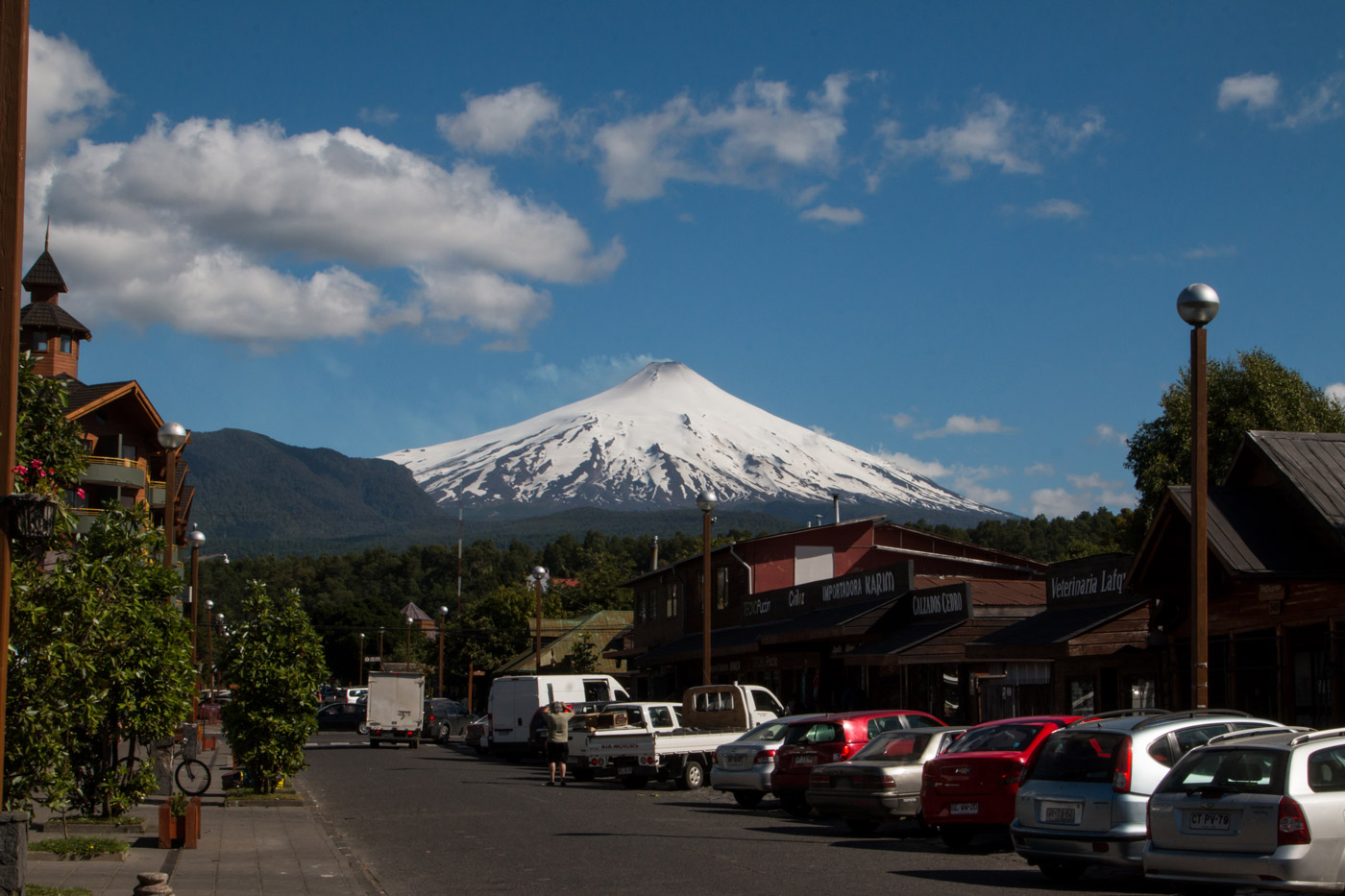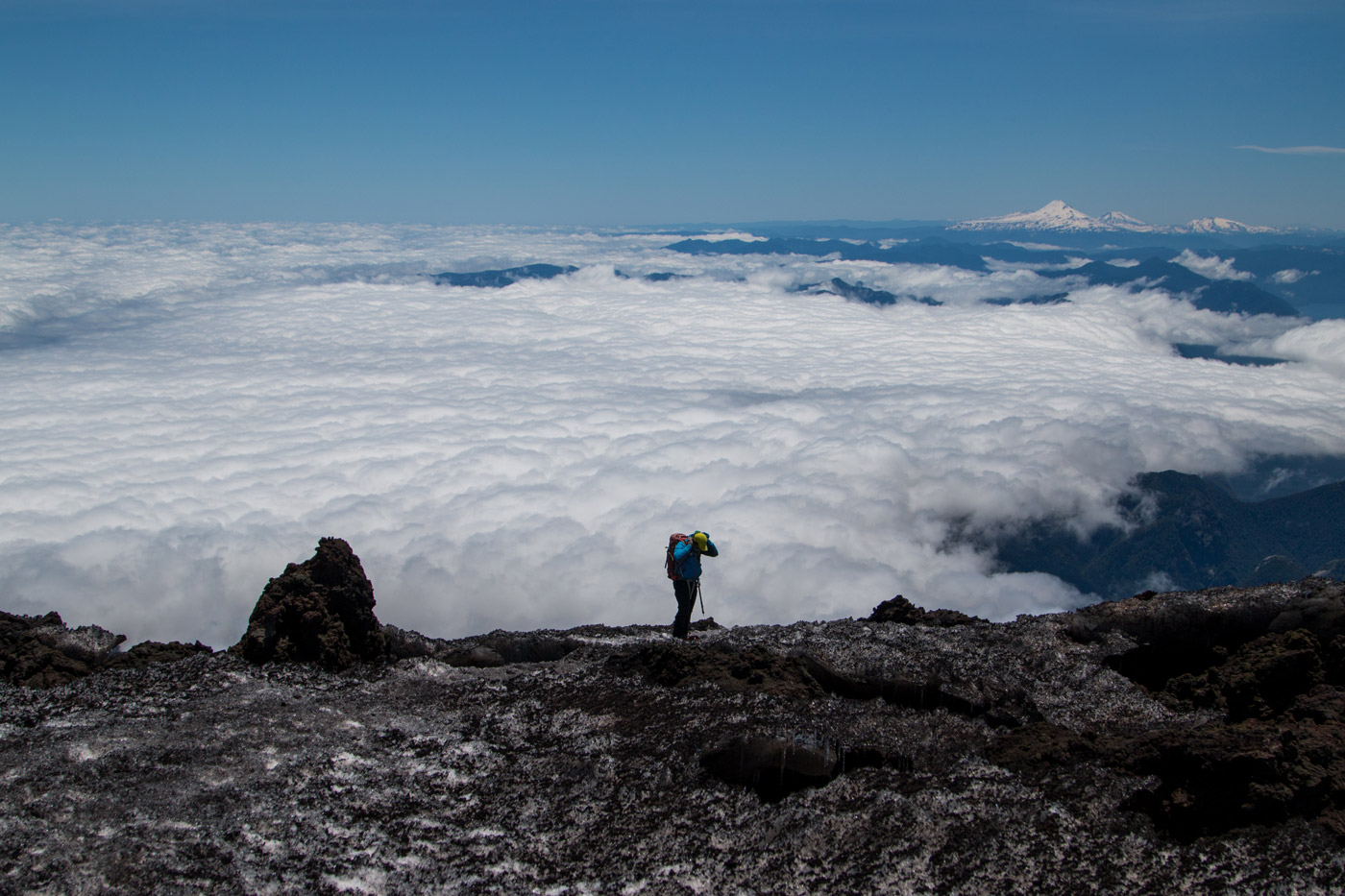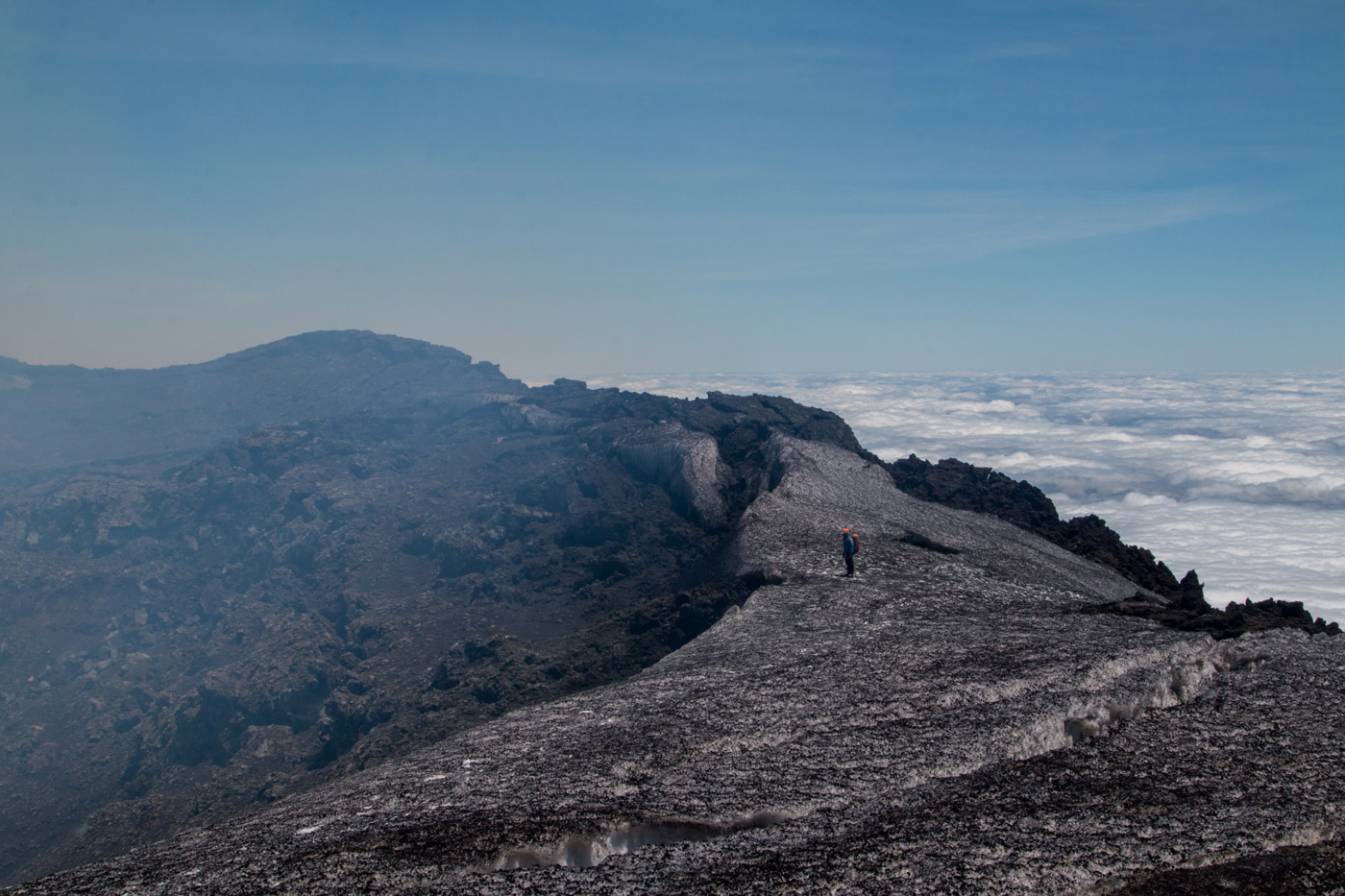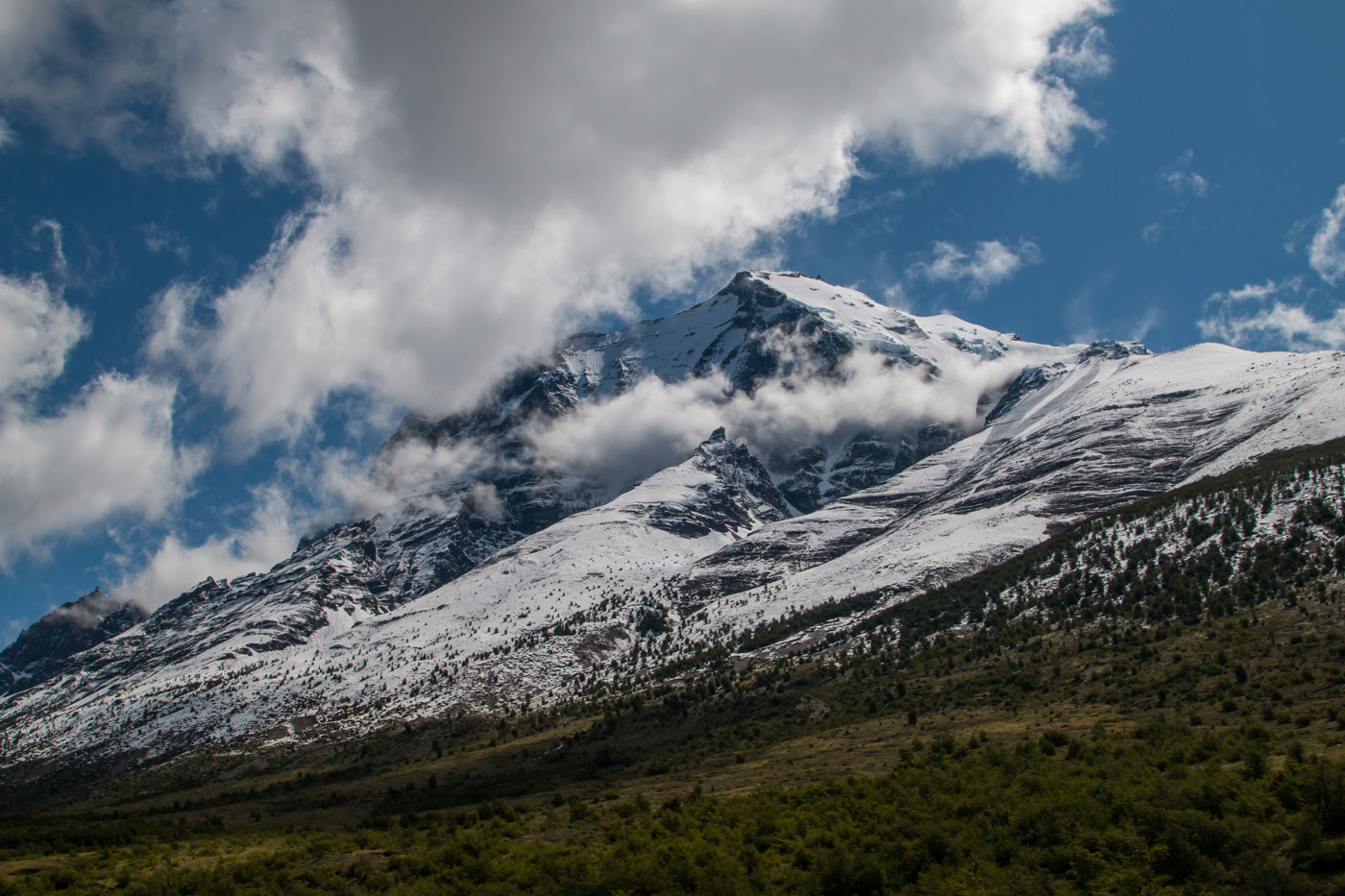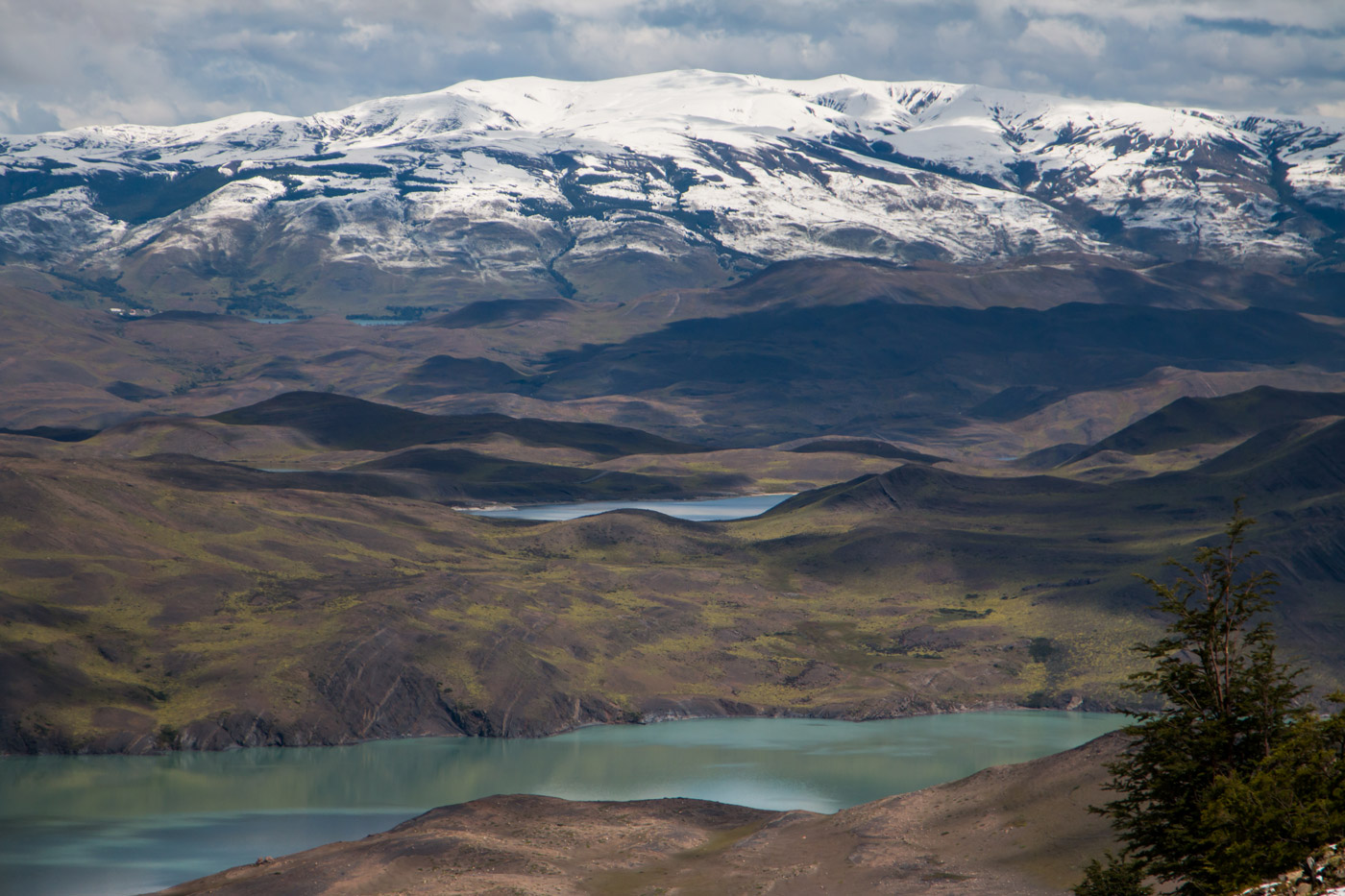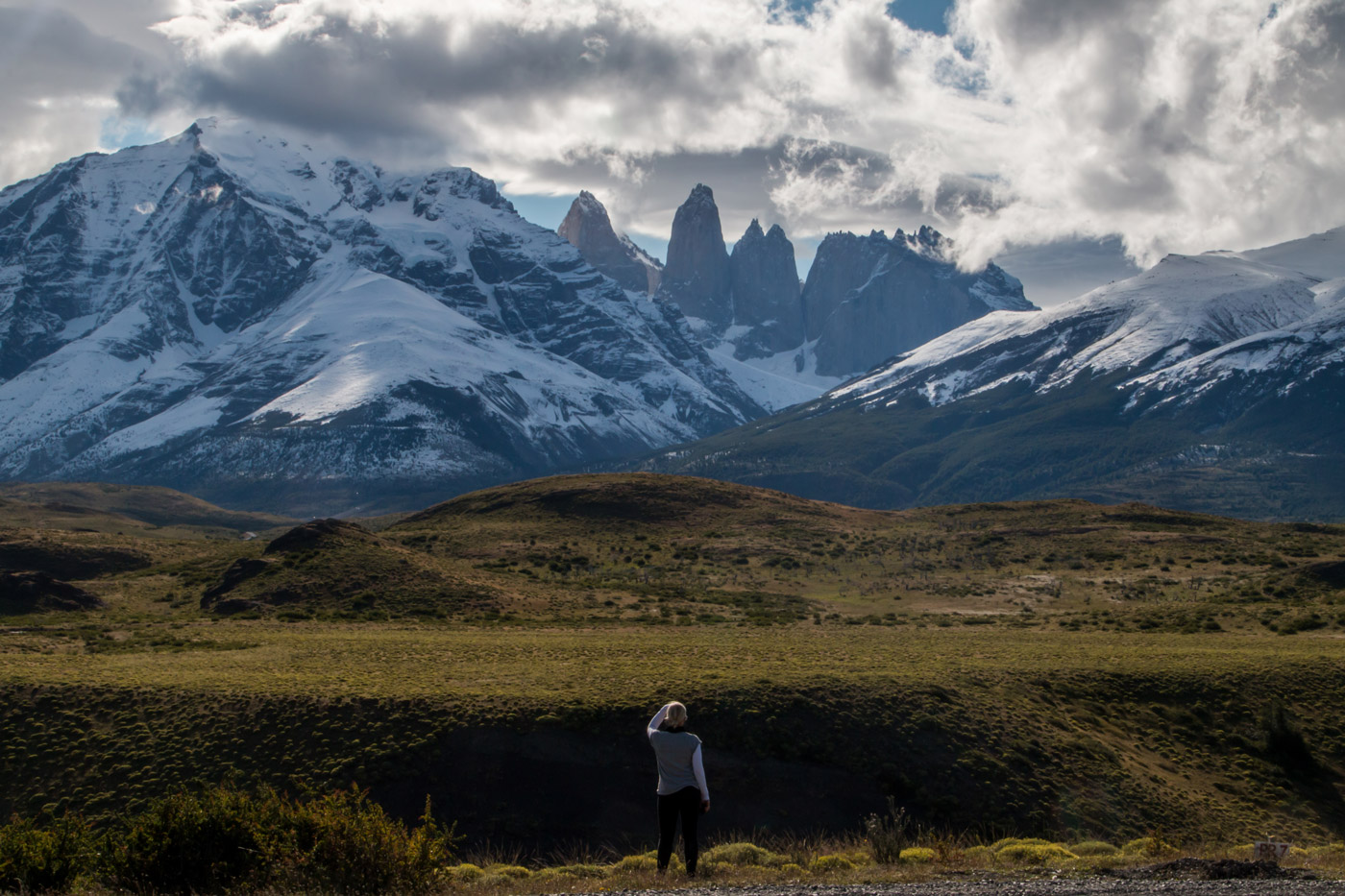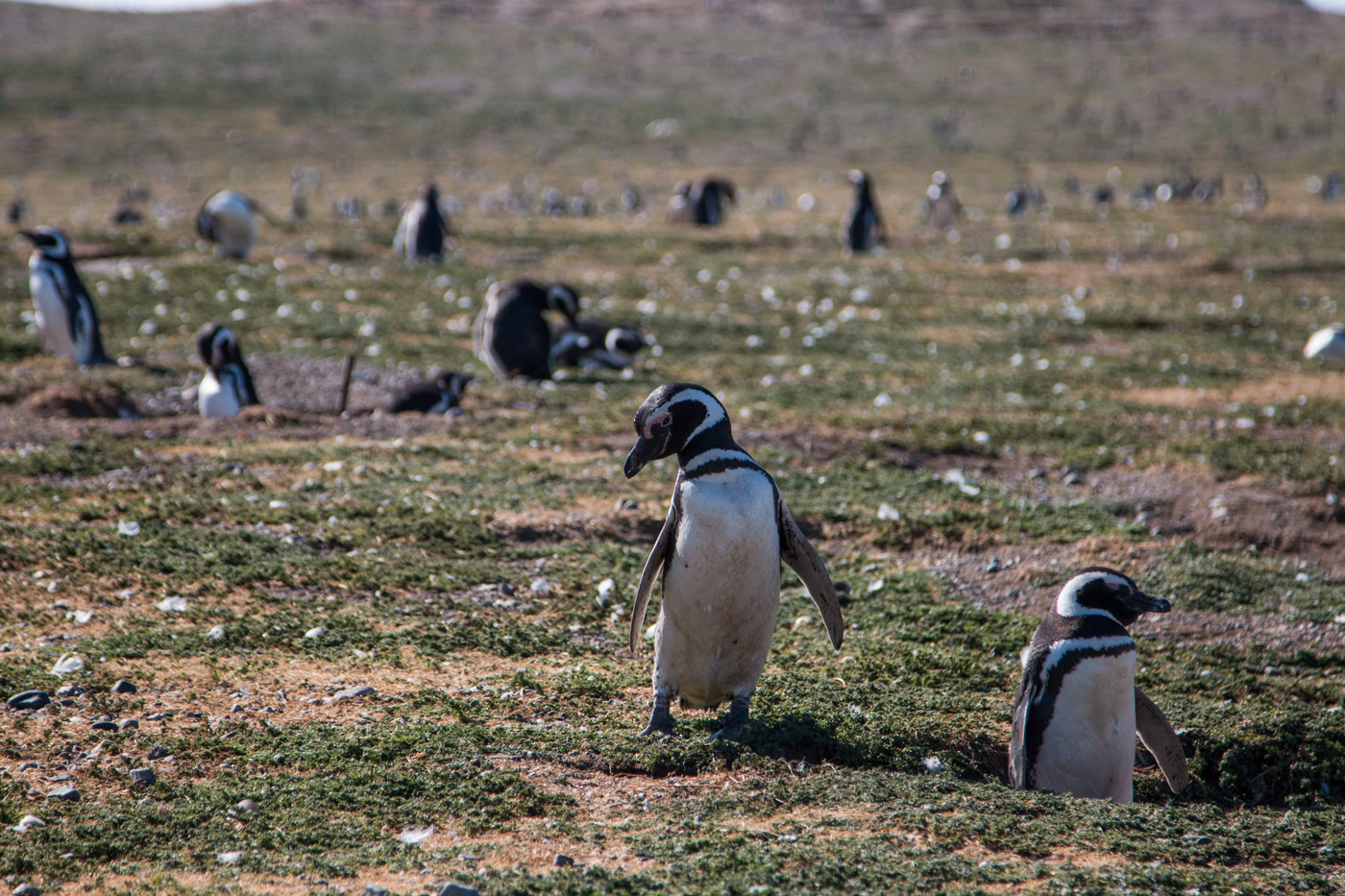Straight off three days on the Uyuni Salt Flats in Bolivia we were dropped at the northern border of Chile and made our way into the closest town, San Pedro de Atacama. The small, cute and dusty desert town is complete with cacti, narrow streets and mudbrick buildings that looked like something out of the Flintstones.
The first thing we noticed is how different Chilean Spanish is to the rest of the continent with their accent and use of slang taking some getting used to. Chile was also one of the first countries that took border control and customs seriously with restrictions likened to that of home in Australia. We were told that the reasons for these precautions against contamination were also quite similar in that although it is not an island country, Chile also considers itself to be quite isolated and protected with ocean guarding its west, the Andes in the east, desert in the north and the harsh wilderness of Patagonia in the south.
The Atacama desert is the driest in the world, with some regions having never received rainfall and some parts so arid that no plant or animal life can survive. One of the most popular attractions in the area is Valle de la Luna (Moon Valley), named after its strange landscape that is likened to the surface of the moon. We joined a tour that led us through the desert and crawling through caverns beneath the surface. The various stone and sand formations stretched as far as the eye could see in a mixture of earthy tones. The desert unsurprisingly offered nothing by way of shade and with temperatures reaching up to 30ºC during the day we were glad we took the afternoon tour and even more relieved that for once we were the ones in the air conditioned minibus instead of with the people we sped past struggling on bikes.
Chile, and neighbouring Argentina, are incredibly long and varied countries with their borders running side by side for a staggering 5,150km. In our pursuit to continue south and reach Patagonia at the bottom of the continent we decided to avoid any backtracking and move in and out of both countries continually the whole way down. Luckily over the past year we have become increasingly tolerant towards the drawn out processes of border crossings and exceedingly quicker at filling out immigration forms for we ended up crossing the border of Chile and Argentina on five separate occasions. Whilst Valparaíso was technically not our next stop chronologically I will cover the other destinations in the next blog post for Argentina.
Valparaíso
Crossing back into Chile we passed through what could only be described as the best looking border yet, though if you have been following previous posts you will know that this is not that difficult. Located amongst ski resorts, its peaceful and picturesque backdrop of snow covered mountains was perfect to break up the long bus journey. We arrived into the seaside port town just as it had gone dark and after finding our hostel we dropped our bags and went searching for dinner. Walking from the hostel through empty, dark alleyways I began to wonder if we had chosen a dodgy location. It was not until the following morning when we went to explore that we realised that these same alleyways were actually colourful laneways filled with street art, restaurants, bars and coffee shops and one of the main tourist attractions in the city.
Valparaíso was once a bustling port city until the building of the Panama Canal saw most of the boat traffic diverted higher up the continent. This blow to the local economy meant the town sat dormant for many years until the city was reborn. Today, it has been revitalised as the cultural epicenter of Central Chile attracting thousands of tourists each year. Along with colourful art filled laneways, it is also known for its brightly painted buildings. We later learned that these houses and shops lining the hills were actually painted using leftover paint from the container ships and their corrugated iron roofs and fences built from salvaged supplies.
Still confident that the free walking tours are a great way to get an overview of an area from an experienced local, we met up with the popular Valparaíso Tours4Tips. The friendly guide led our group up and down the many hills and stairs throughout the city, taking us through laneways and explaining the street art as well as up high for some excellent views. We learnt the hard way that the steep hills make many areas of Valparaíso inaccessible by public transport and instead quirky elevators connect these parts of the city. At over 100 years old these elevators jolt and rattle their way near vertically up a railway line pulled by cables and old engines. Our group passed through the old turnstiles and piled in, admiring the same view on the way up that locals have enjoyed for years.
Back on the coast and with access to a wide variety of fresh seafood we eagerly visited several of the sushi restaurants spread throughout the city. Having been a long time since last having access to sushi we went a bit overboard and ended up ordering a 60 piece platter. One of the foods I’ve been most looking forward to as we headed south were empanadas. Very common to both Chile and Argentina, they are baked pastries filled with assorted fillings and for sale everywhere from street corners and roving vendors to upscale restaurants. As luck would have it, our hostel was located just up the road from a popular empanada shop that sold 80 different varieties!
We signed up for a cooking class that would see us first visiting the markets for supplies and then learning how to make some traditional Chilean dishes that we hope to attempt back home. When we were finished we all sat down as a group and enjoyed our empanadas, ceviche, pastel de choclo and flan along with several pisco sours and glasses of wine. Already well on our way by the time the class finished we continued on with our classmates to a few bars nearby.
With football more of a religion than a sport in South America we were keen to see a game and tried for days to get tickets to a big, local derby that was sure to have some atmosphere. After numerous attempts to get tickets, including visiting the club office, we still had no luck and instead sat down to watch it in a bar. Turns out missing out was for the best as the game was abandoned before it even began due to violence between the Wanderers and Colo Colo fans that deteriorated into a riot when ‘fans’ stormed the field damaging everything from video cameras to the goalposts and attacking each other with bottles and fence poles. The riot police were called in and the violence was bad enough to make international news including the Sydney Morning Herald back home.
Santiago
After dropping our bags at the hostel we walked towards the fish markets, a recommended spot for a fresh seafood lunch and a popular place for locals and tourists alike. We navigated the busy crowds and eager waiters to find a table and settled for some salmon and a ceviche.
We spent a couple of days in the capital city, though with it appearing to be none other than a big city we half heartedly explored the main plaza and outdoor shopping streets before planning our departure south.
Los Ángeles
As the closest town to nearby waterfalls, Salto del Laja, we decided to stop in for a night and break up the trip. In what should have been a sign when we could not find a single hostel beforehand online we walked through the main streets and appeared to be the only tourists in town. With our bags on our backs we walked around door knocking to try and find a bed each for the night. Eventually we found somewhere that bothered to answer the door and the owner of the ‘accommodation’ watched in amazement as we carried our bags in and got out our passports, no doubt wondering what the hell we were doing in Los Ángeles. The price had initially seemed way too cheap for a nights stay however once being led inside it was more than justified, especially when it came complete with a bathroom straight out of the Saw movies. As we went to bed I thought I would have to sleep with one eye open but all precautions went out the (non-existent) window as I fell asleep as soon as my head hit the pillow.
The next morning we woke early and took a bus out to the waterfalls to find we were one of the first ones there. After taking many photos from various vantage points we braved the spray and climbed closer for a better look. With time to spare we lay on the grass under a tree and watched the water tumble down to the rocks below.
Pucón
Arriving late at night we got off the bus and were instantly shocked at the drop in temperature. We had always planned to make it down into Patagonia and had been carrying warm clothes around in the bottom of our bags since the beginning of the trip.
Pucón is a major centre of adventure tourism in Chile, located by a lake and a volcano, it attracts tourists year round. From skiing and snowboarding in winter to whitewater rafting and water skiing in summer, the town has it all.
The next morning we took a local bus to Ojos de Caburgua, a group of three waterfalls falling into amazingly inviting, clear blue water. We followed the several pathways around the waterfalls, taking photos at every opportunity and resisting the temptation to ignore the signs and jump in. Spotting people on the other side of the pools on walkways admiring the falls from a different vantage point we were curious as to how to join them. Asking back at the ticket booth, Lauren was told that it was a different property and that we would have to go several kilometres up the road to enter and buy a ticket. Not keen on that idea we instead found a gap under the fence and climbed through to enjoy the waterfalls from the other side.
Dominating the skyline, the spectacular yet intimidating Villarrica volcano looks over Pucón and is one of Chile’s most active volcanoes. The steep, cone shaped volcano erupted as recently as 2015 raising the alert to red up to 10 kilometres around. The loud explosive eruption exceeded the height of the volcano and forced the evacuation of 3,385 people in nearby communities.
Motivated both by Lauren’s keenness and my fear of missing out I joined her in signing up to climb this very same volcano. Early the next morning we were picked up by our guides and, along with two others from the hostel, went to try on our gear. Equipped with boots, crampons, waterproof clothes, helmets, gloves and ice axes we drove to the carpark of Villarrica-Pucon Ski Resort and got ready to begin the hike.
Starting in the ski field our group of four plus two guides set off underneath the sadly closed ski lifts for what would be near constant uphill walking to reach the summit and ultimately the volcano’s crater. We maintained a fairly steady pace for the first hour and had already passed a few people struggling and deciding to turn around. Reaching the top station of the lifts we stopped for a quick break and got our gear ready to tackle the steeper and more slippery ice.
We were very happy to see a clear, blue sky and near perfect visibility just as the weather forecast from the night before had predicted but what took us by surprise was the strength of the wind as we clung precariously to the side of an active volcano. As if the hike wasn’t already challenging enough, at times we were forced onto our hands and knees with our ice axes jammed hard into the ice to avoid being blown over and slipping down the side.
Exhausted, freezing and with feet now covered in blisters, we climbed up through and above the clouds and made it to the summit, 2,860m above sea level. Taking just over five hours of steep hiking and climbing to reach that point we turned around to admire the view and our guides pointed out several other volcanoes in the distance poking their way through the clouds. We fetched our gas masks from our backpacks and ventured up to the edge of the volcano’s smoking crater. Even through the mask the toxic gas made breathing difficult as we looked down into the deep and unforgiving crater. After posing for a few quick photos our guide led us around to the side of the crater just in time to see a small section of lava bubbling and spitting at the bottom.
As spectacular as the view was we couldn’t stay up there for long due to the dangers in breathing the gas and the fact that the volcano was of course active. The fun was only just beginning, for going back down was something we had all been looking forward to. The stories about the descent were true and we would be taking the easy way out and sliding all the way down the volcano on our bum. Sitting on a small piece of plastic, one after another we hurtled down the side of the volcano attempting to follow the worn grooves in the snow and ice. Using the ice axe as a makeshift brake, some more than others, it was a wild and out of control ride bouncing, spinning and jumping our way to the bottom covering what had taken us over five gruelling hours to walk up in less than 30 minutes!
Puerto Natales
Already deep in Patagonia by this stage and amazed by the stunning landscapes we had already seen, we crossed back into Chile from Argentina and continued south to Puerto Natales where we would spend Christmas and several days exploring Torres del Paine National Park.
Torres del Paine National Park encompasses mountains, glaciers, lakes and rivers and was elected as the 5th most beautiful place in the world by the National Geographic. The three granite towers by which the park is named after extend up to 2500m above sea level offering postcard perfect photos, provided you are lucky with Patagonia’s harsh and rapidly changing weather.
Having already well and truly exceeded our hiking expectations this trip we had decided against the 5+ day hike through the park. Instead we organised for a tour around the park, driven in a small van with a local guide and a few other people. We stopped frequently for photos and enjoyed the much more relaxed pace in comparison to many of the other large bus groups we saw being rushed and herded through the spectacular viewpoints. In true Patagonian style the weather changed from cloudy, to sunny, to rainy, to windy all in one day but we still managed to get glimpses of the main features emerging from the clouds.
Being far away from family at Christmas time can be lonely and even more so when you are in one of the more remote places in the world. Fortunately there were plenty of other backpackers in the same situation and our hostel put on a big Christmas Eve dinner for all of the guests. As is tradition in Chile, families typically celebrate the night before Christmas and we all sat down as a group to enjoy a big spread of food, desserts, beer, wine and champagne late into the night. On Christmas morning we enjoyed a sleep in, contacted the family back home and went out and found one of the only restaurants open for lunch in an otherwise very quiet town.
On Boxing Day we took off on a day hike towards Las Torres (The Towers) and were surprised to discover it had snowed overnight, which we were told was very unusual for this time of year. The snow and ice made it extremely slippery heading up the mountain and we were forced to tread slowly, eventually finding sticks to help keep us on two feet. The end of the hike places you at a lake at the foot of the towers, but unfortunately the trail was closed due to the snow. Heading back down, the afternoon turned out to be some of our best weather yet melting away the snow from the paths and providing us with stunning views of the surrounding National Park. On the way back to town we stopped several times to admire the towers in all their glory shining in the afternoon sun surrounded by snow and southern Andes mountain range.
Punta Arenas
At Punta Arenas, we had finally reached the southernmost point of our trip and were satisfyingly far down the bottom of the map. On our next afternoon we took a ferry across the strait to Isla Magdalena home of a penguin colony of 200,000 penguins! Walking ashore we were greeted immediately by hundreds of penguins waddling around and crossing the paths unfazed by the people. We excitedly made our way along the designated paths unable to resist taking photo after photo from a different angle or lighting. There were groups of penguins scattered across the grassy island as far as the eye could see, while closer up we watched as small, fluffy babies were cared for in the burrows.
The following morning it was time to leave Chile and get a bus, from a company aptly named El Pingüino, across to Río Gallegos Argentina where we would be flying out of to reach the big, modern city of Buenos Aires in time the celebrate the New Year!
